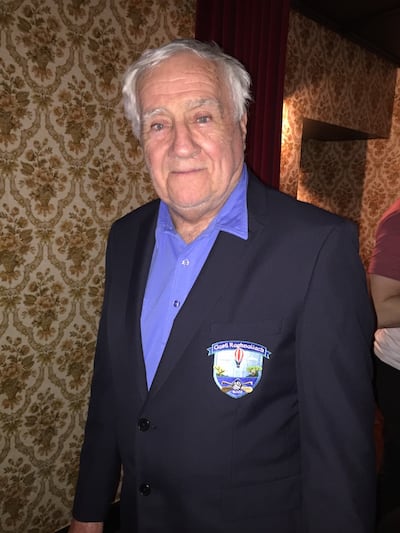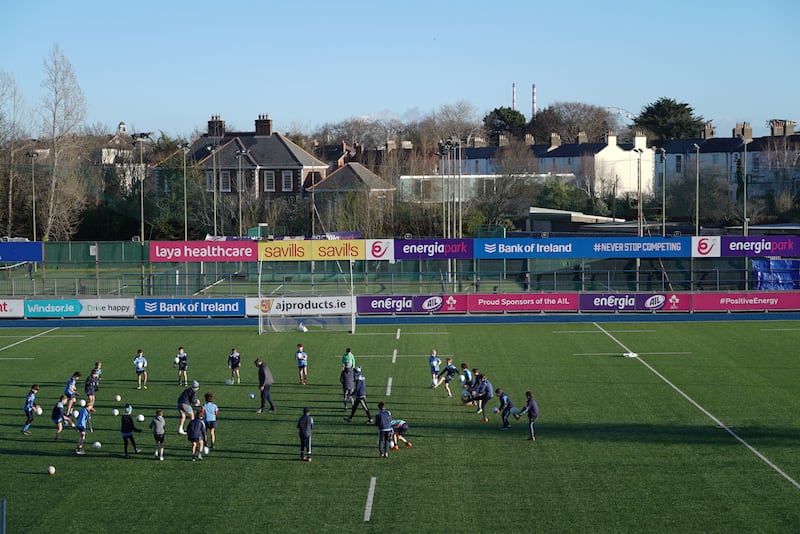Both rural and urban GAA clubs face increasing challenges as demographics in Ireland change. This is one of a series of articles exploring the issues clubs face and what they are doing to adapt.
Ranelagh Gaels (Dublin)
Founded: 2003
Members: 1,529 (543 adults, 986 juveniles – of which 794 are female and 735 male)
Number of teams: 19 juvenile groups, 3 adult teams (men’s football and hurling, women’s football)
It started out, as many fanciful ideas do, in the pub.
Liam O’Hagan, Denis King and Brendan Mulvaney were sitting in Smyth’s of Ranelagh. Liam, as ever, swirling the remaining golden drops of tea around a white porcelain cup. Just out the door, at the top of Sallymount Avenue, for 65 years his family had run the village’s landmark fruit and veg shop.
“We’d never had a GAA club in the area,” recalls Liam. “It was something a few of us would discuss often, without ever doing anything about it.”
But on that occasion, they did. Frank Smyth, Liam’s long-time friend and the owner of the bar, said if a team was cobbled together he’d sponsor a set of jerseys. So out came the scissors and Sellotape and up on the pub window went a speculative poster. It was 2003.
♦♦♦
One afternoon 20 years ago Shane Minihane was walking through Ranelagh. Originally from Cork, he was working in the Smoke and renting a place locally with a couple of boys from Kerry. A poster in the window of Smyth’s caught his eye.
By evening’s end he had persuaded his housemates to go with him to the meeting. Shane remembers the gathering attracting about a dozen. Liam reckons it was more like 25. Apples and oranges. And only a foolhardy soul would argue apples and oranges with Liam O’Hagan.
One Australian patron in the bar that evening took a particularly enthusiastic interest in the meeting. Having got so caught up in the moment, he eventually put himself forward for a position on the committee. He was never seen again.
And so Ranelagh Gaels were born.
♦♦♦
It’s January 2023 and Ranelagh Gaels are at bursting point. They are one of the fastest-growing clubs in the country, with a membership of 1,529. Almost 1,000 of those are juveniles and every year the numbers continue to grow. That pub-window poster changed everything around Dublin 6. They struck oil with some scissors and Sellotape.
A couple of years ago, the club had the second biggest Cúl Camps in Dublin.
A long way from the pub team that started, this is now a modern and vibrant club. There is a thriving academy. This year they will have 19 juvenile teams from under-8 to under-16, boys and girls, and a minor team for boys. They will also field three adult teams – women’s football, and men’s football and hurling. A Gaelic 4 Mothers & Others group has 44 women registered.
In 2020, parents Stuart Banks and Ruth Hennessy formed the Ranelagh Rockets for children with additional needs and sensory issues to play Gaelic games. It is a model other clubs have since followed.
Simon Lambert, the former Dublin hurler, joined the club as a Games Promotion Officer on a part-time basis in 2015. In April 2016, to harness and manage the rapid growth the club was experiencing, he was hired full-time.
The juvenile section only started in 2012. Incredibly, all of this has taken place in just a decade.
But Ranelagh Gaels are a club without a home.
A nomadic club, whose figurative base is just south of the canal, in an area where most available green swathes are worth more than oil.
“If the GAA want Gaelic sports to be sustained closer to the city centre, more will have to be done to create space for clubs there,” says Ranelagh chairperson Bríd Quigley.
“We’re probably the most extreme example because of our growth. Six years ago we had about 300 kids, now we have 1,000.”
Ranelagh Gaels don’t own a single blade of grass.
On a weekly basis the club’s many teams are scattered to the wind, training and playing at over a dozen different locations, creating logistical challenges for coaches and parents alike. Ranelagh’s bill for renting facilities in 2022 was just shy of €50,000.
The only full-size pitches available to them are a shared public pitch in Bushy Park and another at Cathal Brugha Barracks. Dublin City Council provided a juvenile pitch in Dartry Park in 2021 but it will only serve teams up to under-13 level and with more underage teams coming to the stage where they need to be playing on full-size pitches, the situation is critical.

“If we want our kids to be active in sport, our city planning needs to have accessible facilities,” adds Bríd.
Originally from Limerick, she first brought her boys down to the Ranelagh Gaels academy when it was in its infancy. The club had been allocated a small area in Herbert Park, which was affectionally known as “the cage”. But crucially during those growing pains there were good people knitting the club’s future together, the likes of Conn McCluskey, Frank Kelly, Joe Davitt and David Coyle.
The club continues to actively engage with local politicians. It has allowed them to get some development work done at Cathal Brugha Barracks. But it’s all only sticky plaster stuff, none of this will hold forever. They need access to full size pitches and a place to call home.
♦♦♦
Shane Minihane got married in November. His wife, Louise Donohoe, is originally from Cavan. They met through the club. Louise played for the women’s team and also served as the club secretary. Shane is still playing for the men’s team and until last year he managed the women’s side.
Johnny Conlon is still there from that first season too, while Eamon Courtney, Denis Doolan and Enda Marren all played in 2022. Sons of Sligo, Galway, Offaly and Mayo respectively.
“It tended mostly to be country lads who had moved to Dublin and for whatever reason had stopped playing down home,” recalls Shane.
Some players were transient, just passing through. But for others the club became their anchor in Dublin. They played. They stayed. And all the while a monster of a club grew around them.
♦♦♦
[ All challenges are different for GAA clubs - in Na Fianna, we crave spaceOpens in new window ]
There were some Sunday mornings out in Bushy Park when lads tumbled out of taxis still draped in the previous night’s clothes, Liam furiously scribbling late changes on the team-sheet while shaking his head disapprovingly. And Wednesday nights when men with no connection apart from joining the same club in Dublin snuck away from work early for a match out in north county. Such decisions sustained the fledgling outfit, allowed the club a future. One life, one club – that was always just marketing nonsense.
“I constantly said to players over the years, it’s not just about football, this is a place to make friends,” says Liam.
The dream was eventually for players to come through the juvenile set-up and represent the club at adult level. Linking the future with the present would make the efforts of the past all worthwhile.
It happened last year with the women’s team and they are on the cusp of realising that ambition with the men’s side now in the next 12-24 months.
Still, the greatest need of all remains pitches and facilities.

The 2017-2022 Dublin city Parks Strategy report shows there are 231 public playing pitches in the Dublin City Council area. 169 of those are allocated as soccer pitches, 60 for Gaelic games and two for rugby. There is only one full-sized GAA pitch under DCC in Dublin 4/6, which is used by neighbours Clanna Gael GAA in Ringsend.
“There used to be a juvenile pitch in Herbert Park but around 2016 it mysteriously changed to a soccer pitch,” adds Bríd.
“There are a number of clubs like ourselves in Dublin city centre where survival will depend on the availability of proper playing facilities.”
♦♦♦
The Godfather of the club is now 84.
“We just need to get a home, it’s crucial we have a place to call our own,” says Liam O’Hagan.
The club is too big to continue in a nomadic existence. On this current trajectory, nobody is quite sure what will be sustainable.
Writing in his recent annual report about the difficulty in sourcing pitches, Dublin GAA CEO John Costello stated: “Basically, there is very little available land and if suitable land comes on the market, the price is usually prohibitive.
“It makes me think about the long-term effect on the city and its people.”
Few clubs understand these challenges quite as acutely as Ranelagh Gaels.
“The last 20 years have been brilliant, but we need to mind the club now, we need to be careful .. we need to find a home,” adds Liam.
He never bothered with a mobile phone. But he often picks up the landline and calls some of those players he cajoled and bawled at on pitches across Dublin over the years. He kept in touch with many of them, long after they stopped playing. Because he was never creating a football team. Liam O’Hagan was always creating a club.
Apologies, there goes my phone.


















